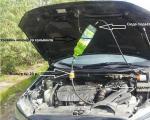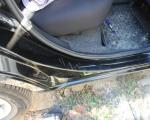How to find out the real mileage of a car, how to twist the mileage?
The secondary car market in Russia now has a very large selection, there are cars of American, Japanese, European production, "Koreans" and "Chinese". Choosing a vehicle is not easy, but there are certain characteristics that are first of all paid attention to.
The following factors are of great importance to buyers:
- year of manufacture of the vehicle;
- general technical condition;
- appearance of the car;
- mileage (mileage).
A more sophisticated buyer knows a lot about cars, and does not always focus on the number of kilometers traveled by the vehicle. Beginners, on the contrary, try to choose a suitable car with low mileage on the odometer, but the numbers displayed on the scoreboard do not always correspond to the actual distance traveled.
The tradition of winding down the odometer readings has existed for a long time; back in Soviet times, the mileage was often twisted. But the meter readings are not always underestimated, in some cases the mileage is increased:
- the driver of the car at the enterprise may not go on a trip, but ascribe extra kilometers to himself. So he writes off gasoline, selling it "to the left";
- the driver does not go on a flight, he is doing his own business at this time.
Why the mileage is twisted, of course, when selling a used car with a small number of kilometers traveled, it rises in price. Enterprising sellers try to put the vehicle in a better light, especially since a car with low mileage is bought faster.
 What are odometers
What are odometers
The odometer in the car is used to read the kilometers traveled, there are three types of these devices:
- mechanical;
- electronic;
- electromechanical.
All kilometer meters take their readings from the gearbox, on some models the speedometer gear is installed in the transfer case. The speedometer drive can be either electric or mechanical (cable), but in the electric version, the readings are more accurate.
The mechanical odometer has a number of wheels with numbers, which are usually located on the speedometer itself. Due to the gears, the wheels rotate, respectively, the numbers on the rotating drums change.
Pulses are read in the electronic odometer, in many modern devices a Hall sensor is used, and the kilometer readings are displayed on an electronic scoreboard.
In electromechanical devices, there are both mechanical and electronic sensors - usually the drive is mechanical in them, and the electronics displays information on the scoreboard.
Potential buyers of used cars are interested in how you can find out the actual mileage of the purchased vehicle. There are many ways to determine the distance traveled, we will talk about them.
On many modern auto mileage is displayed not only on the electronic scoreboard, the readings are duplicated in the keys, in various electronic units (ABS, gearbox, transfer case). You can view the readings of duplicate meters on special scanners or on computer devices that are connected to the car's electrical circuit. For example, on the first generation BMW X5, data can be taken from the handout.
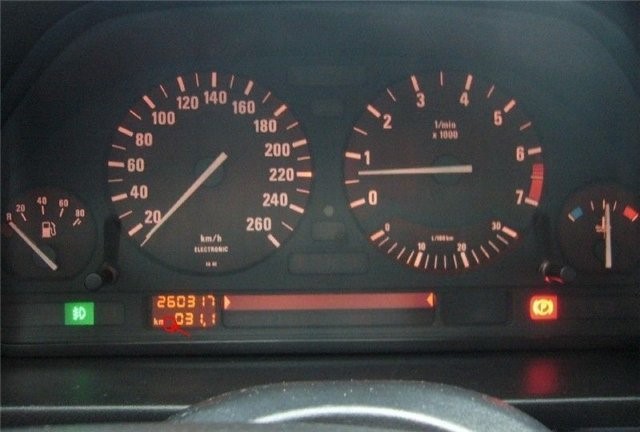 Sellers can twist mileage readings on any odometer, including on an electronic meter, it is for this reason that one should not trust the readings on an electronic scoreboard. The honesty of the mileage can be checked in the service book, where there are all the marks on the completed maintenance, for this you should contact the official dealer who carried out the maintenance.
Sellers can twist mileage readings on any odometer, including on an electronic meter, it is for this reason that one should not trust the readings on an electronic scoreboard. The honesty of the mileage can be checked in the service book, where there are all the marks on the completed maintenance, for this you should contact the official dealer who carried out the maintenance.
You can try to find out if the car’s mileage is twisted by paying attention to the odometer counter:
- On a mechanical device, when rewinding a run, the numbers are often uneven, so you should pay attention to their location. It is difficult to judge the condition of the speedometer cable, the fastening nut could be unscrewed not only for the sake of twisting the mileage, but also to replace a faulty cable;
- To twist the mileage on the electronic odometer, intervention in the electronic circuit of the device is required. Whether the mileage was twisted or not can be determined by the traces left by the tool during disassembly.
Experienced motorists determine the approximate mileage of the car by external signs, according to the condition of some parts. Many advise to pay attention to the following items when buying a car:
- the degree of wear of the steering wheel and gear lever;
- Worn rubber pads on the brake pedal and gas pedal.
With a high mileage, these parts may indeed have signs of wear, but all this is subjective. To some extent this is true, but the following points should be taken into account here:
- pedals, steering wheel and handle can be changed, in addition, many parts in good condition are sold at disassembly;
- Everyone uses their car differently.
It is easiest to judge the kilometers traveled by the condition of the left side of the driver's seat. If there are scuffs or holes in this place, most likely the car has a solid mileage - the skin has signs of wear most often after 200 thousand kilometers.
When buying a used car, you should carefully inspect the engine compartment. When changing engine oil at service stations, the craftsmen leave stickers and the mileage is written on them. The dealer dealer could not find these stickers, and if you're lucky, you can find out the approximate mileage from them.
A simple example - the seller claims that the car has traveled 120 thousand km, but upon closer inspection, a sticker was found under the hood about changing the engine oil at a mileage of 280 thousand km. Further comments are superfluous.
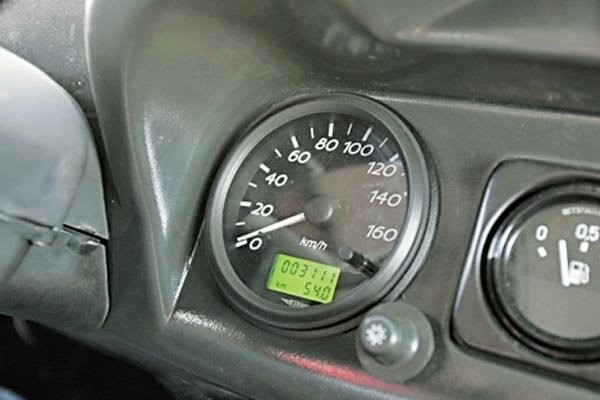 What cars most often twist mileage
What cars most often twist mileage
Very often, the kilometers traveled on expensive cars with rich equipment are twisted. To check the actual mileage of the vehicle, you can invite the seller to conduct an independent examination.
It's hard to check twisted mileage on "truckers" that have been in constant use. Such machines are constantly in motion, winding many kilometers. Often, many motorists calculate the actual mileage depending on the age of the car, for example, if the car is three years old, it runs 60-100 thousand km on average. "Trucker" during this time can run over 300-350 thousand km. It is very profitable to reel up the mileage for “outbidders” here - most often such cars are operated on country roads in a gentle mode, so they look very decent.
The easiest way to make the counter spin in the opposite direction is on a mechanical odometer, here almost everyone can twist the car's mileage with their own hands. For this procedure, you do not even need to disassemble the instrument panel. This is done as follows:
- the speedometer cable is turned away from the gearbox;
- an electric drill with a reverse is taken;
- the drill is connected to the cable and turned on.
After rewinding the required number of kilometers, the drill is turned off.
In order to change the mileage on the electronic odometer, it is necessary to disassemble the instrument panel. In the filling of the electronic counter there is a special microcircuit responsible for the mileage. On electronic odometers, mileage is changed using:
- programmer;
- special programs for calculating odometers.
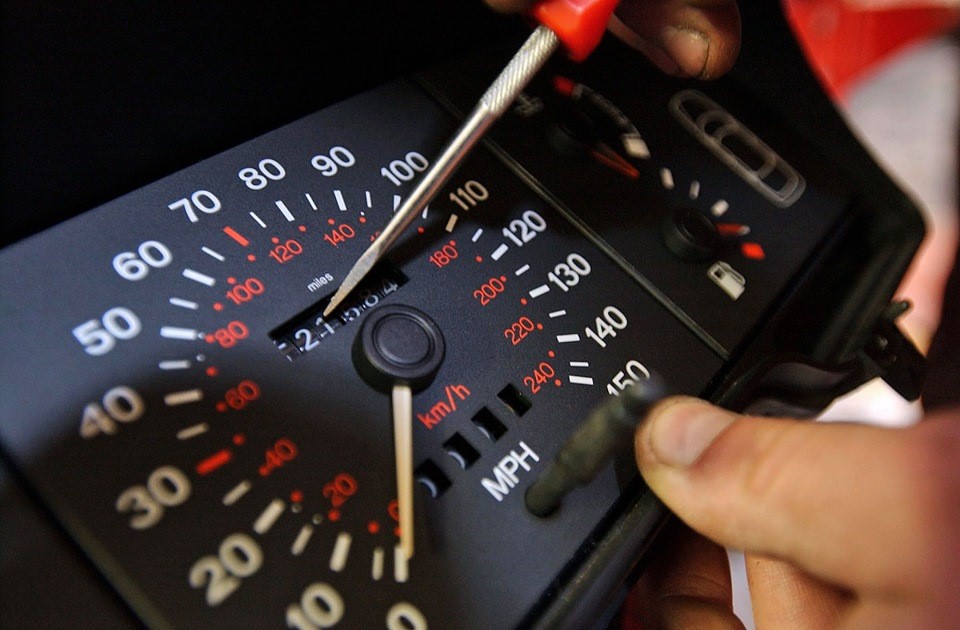 Who twists the mileage on the odometer
Who twists the mileage on the odometer
Unfortunately, in Russia, mileage is twisted by almost 90% of cars in the secondary market. Car owners resort to the services of car services, some car centers do not hesitate to advertise their services publicly. The law of the Russian Federation does not prohibit such fraud, so when buying a used car, you need to be vigilant. Abroad, fans of winding up mileage are punished, but not all scammers are caught. For example, a third of cars with a rolled odometer come from Germany.
You can twist the real mileage for any car, another thing is that for some cars it is more difficult, for some it is easier. The easiest way to twist the mileage is in European cars, it is much more difficult for Japanese cars. But the difference in the price of a car with different mileage is still more noticeable than the amount that you have to pay for twisting the mileage.
 If you are buying a used car:
If you are buying a used car:
- First of all, ask for a service book with maintenance marks - this is the only document that really reflects the number of kilometers traveled.
- Feel free to make inquiries from authorized dealers where maintenance was carried out, for this you can introduce yourself as the owner of the car. After confirming all the data, you can safely make a purchase.
- To check the technical condition, ask the owner of the vehicle to carry out a deep diagnosis of the car. It’s good if you have friends in the car service - they will objectively assess the condition of the vehicle.
- If you are buying an expensive car with rich equipment, offer to drive to an authorized dealer in order to read the data from the key. Resellers reflash electronic components, but the dealer retains the correct data (naturally, if the dealer was not bribed).
- You should pay attention to the condition of the service book - if it looks like new, then this is suspicious. It is possible that the document may be fake.

